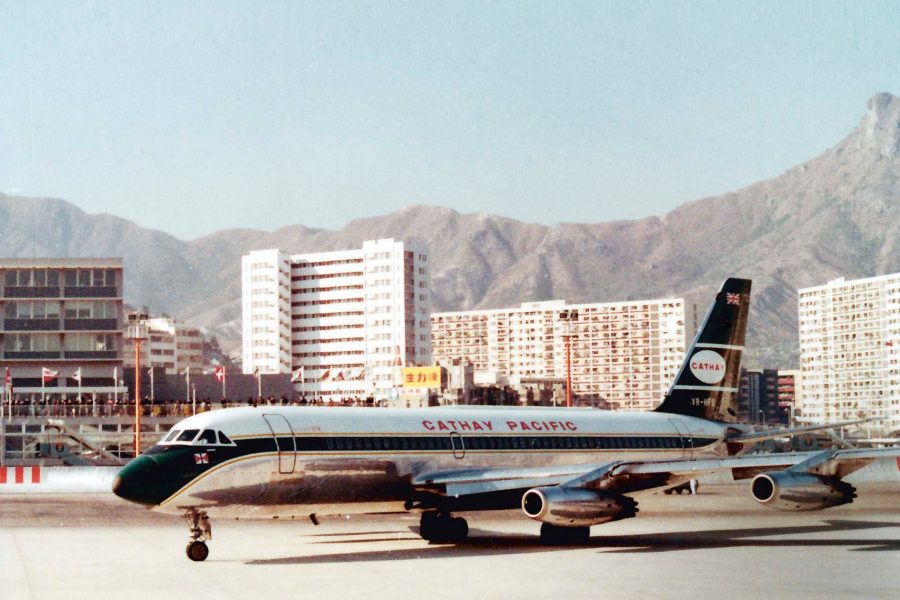When Cathay Pacific went 100% jet

In the early 1960s, the Cathay Pacific board had taken the decision to enter the jet age with the mid-sized, mid-range and affordably priced Convair 880 Jetliner.
It had four engines and was fast and popular with pilots for its sporty flying characteristics. But it made the veteran propeller-powered aircraft in the fleet look and feel their age.
The first to leave in 1962 was Niki, one of the airline’s original DC-3s, which flew alongside Betsy, the aircraft ferried over to Asia from the US by founding partner Roy Farrell back in 1946. Gone, but not forgotten: an exact replica of Niki sits proudly outside the airline’s HQ, Cathay City in Hong Kong, and exceptional staff performance is rewarded in the Betsy and the Niki Awards.
Back then, though, her sale to Royal Air Lao raised some much needed liquidity.
Other members of the fleet followed through the hangar door, with the DC-6s and the final DC-4 leaving the fleet in the same year. By the start of 1963 the fleet consisted of one Convair 880 and two Electras – the turbojet that had been chased off the Sydney route by Qantas’ modern Boeing 707 jets.
By 1965, two more Convairs had joined the fleet – one in part exchange for one of the Electras. More purchases followed; by 1968, the Cathay Pacific fleet was all jet, all Convair, with eight sleek airliners criss-crossing the region’s skies and adding the vital streak of modernity that the airline needed to thrive and compete with its free-spending competitors.
But it was a bumpy ride to start with.
The aircraft required repeated modifications. Designed and built in the warm, dry air of California, the engines struggled to cope with the sweltering humidity of Asia. But work with the manufacturer and US airlines TWA and Delta enabled the essential fixes required for the fleet to master the sultry conditions.
Cathay Pacific was now an all-jet fleet, zipping around its network faster and therefore able to expand with the opening of new overseas offices. Cathay Pacific was confident and well set as the 1970s came into view.
- China – the Chinese Mainland, Hong Kong SAR, Macao SAR and Taiwan Region
- Hong Kong SAR - English
- Chinese Mainland (China) - English
- Taiwan, China - English
- 香港特別行政區 - 繁體中文
- 中国內地 - 简体中文
- 中國台灣 - 繁體中文
- Africa
- South Africa - English
- Asia
- Bangladesh - English
- Korea - English
- Singapore - English
- Cambodia - English
- 한국 - 한국어
- Sri Lanka - English
- India - English
- Malaysia - English
- Thailand - English
- Indonesia - English
- Maldives - English
- ประเทศไทย - ภาษาไทย
- Indonesia - Bahasa Indonesia
- Myanmar - English
- Vietnam - English
- Japan - English
- Nepal - English
- Việt Nam - tiếng Việt
- 日本 - 日本語
- Philippines - English
- Australasia
- Australia - English
- New Zealand - English







